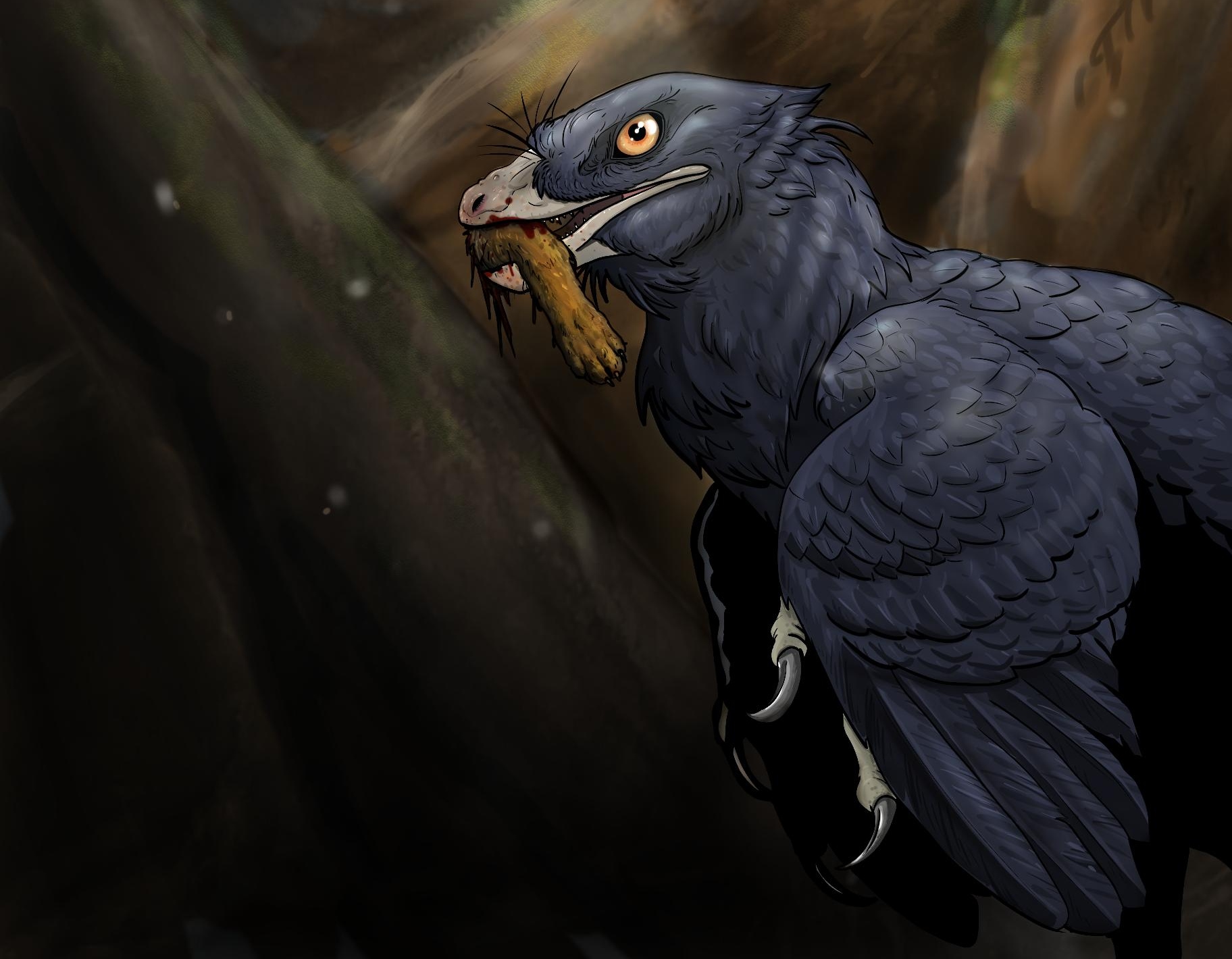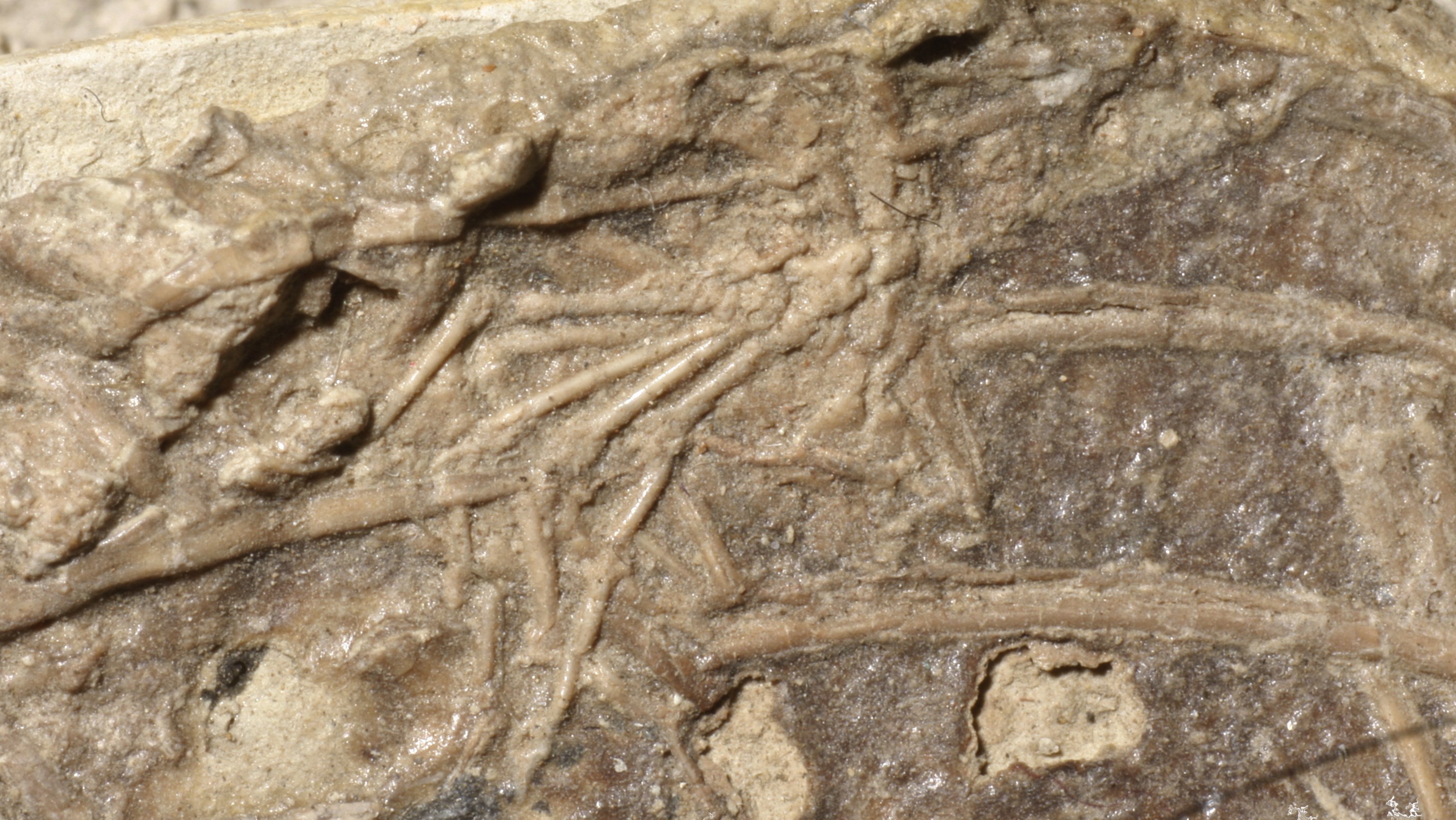An international team of researchers has found new evidence of a dinosaur eating a mammal.
The foot of a small mammal about the size of a mouse was found preserved inside the stomach region of a Microraptor zhaoianus, a small feathered dinosaur from the Early Cretaceous period, according to a new study published in the Journal of Vertebrate Paleontology. The find is only the second specimen ever discovered that shows some dinosaurs ate mammals.
It’s extremely rare to find conclusive evidence of a dinosaur’s diet because of how difficult it is for a dinosaur’s gut contents to be preserved, says Corwin Sullivan, associate professor in the Department of Biological Sciences, curator of the Philip J. Currie Dinosaur Museum in Wembley, Alta., and co-author of the paper.
“There was always interest in [Microraptor’s] diet because there had been previous specimens that contained remains of different vertebrates inside the rib cage, but we have the first one that contains parts of a mammal,” he notes.
Several factors must align for a dinosaur’s gut contents to be preserved, says Sullivan. First of all, the specimen needs to have a reasonably complete skeleton — a rarity in and of itself, particularly for small, delicate animals like Microraptor.
The dinosaur also must have eaten something recently enough before death that the remains were still in the stomach at the time of burial. And whatever was eaten has to have preservation potential, which depends on the presence of bones or other hard components. Potential dinosaur dietary items like leaf matter or flesh would have decayed in the process of fossilization.
“Those things all have to come together — you need to be lucky enough to find not just an intact individual, but an individual that ate a meal including hard parts within a reasonably short time before its death,” says Sullivan.

The Microraptor was found within Early Cretaceous lake deposits in what is now northeast China. The location is particularly suited to exceptional preservation, Sullivan explains, with the potential to capture all kinds of fine details that could not have been successfully preserved in other areas.
“We have intact skeletons of things that are quite small, like Microraptor, and there’s the potential to preserve them well enough that you get things like gut contents, as in our specimen, and in some cases even soft tissue.”
Previous Microraptor specimens from this area have been found with gut contents of a fish, bird and lizard, indicating that these small dinosaurs had diverse diets. However, it remains unclear whether Microraptor consumed the contents in the context of predation or by scavenging. Researchers can only say conclusively that Microraptor was carnivorous.
“Because Microraptor seems to have been fairly abundant and inhabited this environment where preservation in lake deposits was a possibility, we have a lot more evidence about its diet than we do for many of the dinosaurs we have here in Alberta, for example,” says Sullivan.
He says information about dinosaurs’ diets is a key piece in the puzzle as scientists learn more about what was going on at the time they roamed the Earth.
“We’re slowly gathering pieces of information about these past ecosystems and the animals that inhabited them. So what this discovery does is fill in a little bit of information, in that it’s showing the diet of Microraptor was even broader, even more generalist, than we thought previously,” says Sullivan.
“That tells us something about this animal and, by extension, confirms that there were generalist carnivores in these ancient ecosystems — that that niche existed.”
The study was led by David Hone of Queen Mary University of London, with collaborators from Canada, the United States and China.
